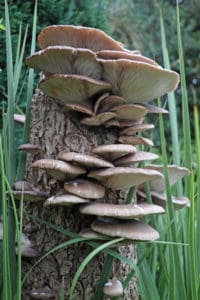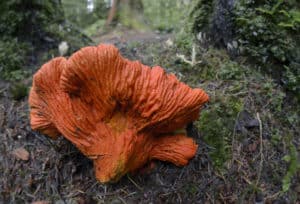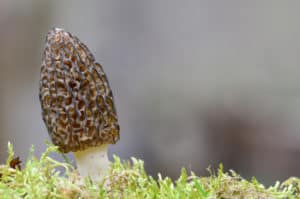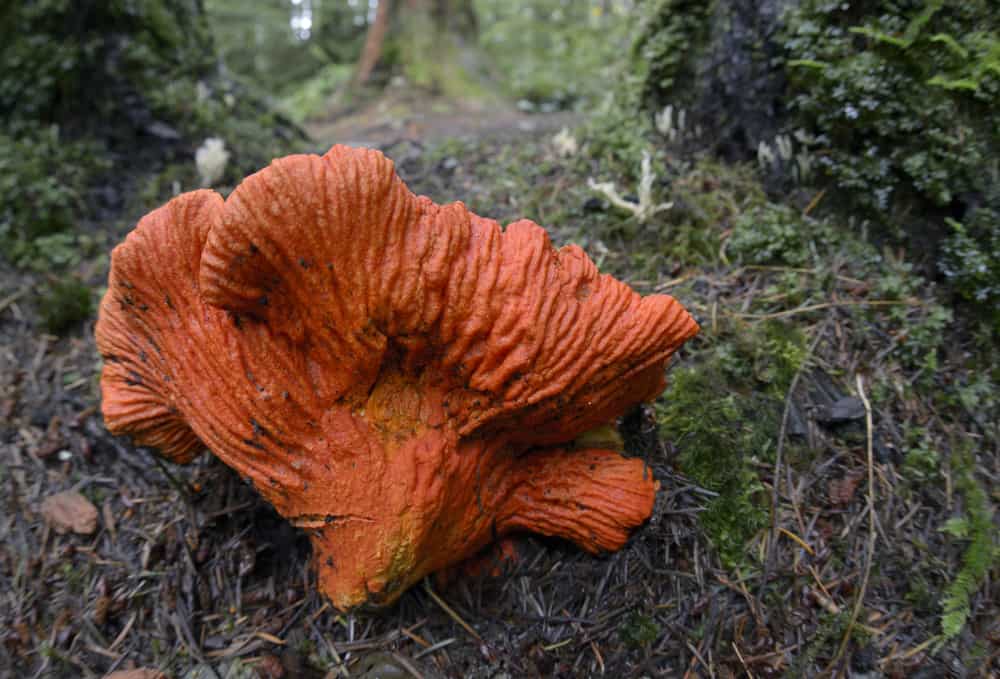The Role of Fungi in Daily Life
Fungi are a significant part of our world and environment. Even though we can’t always easily see the stuff they are doing, they are hard at work. Not all fungi do the same thing; the Fungi Kingdom is vast and comprises a wide range of species, types, sorts, and sets. Some fungi provide essential services to us that we literally cannot exist without, while others use us as hosts for their parasitic endeavors.
The Kingdom of Fungi contains three basic categories based on essential species function and interaction with the environment. Fungi are either decomposers, parasites, or symbionts (mutualists). There is a wide array of specialties within these categories that are as fascinating as the fungi themselves.
Decomposers & Recyclers
The decomposing fungi gather nutrients from dead or dying organic matter. As they take the nutrients from the matter, decomposition is furthered until the wood, leaf matter, or compost is completely broken down. The decomposing of organic matter into viable nutrients, food, and soil isn’t just crucial for the fungi. Plants, other fungi, and animals, including people, benefit significantly from this recycling of matter.
Plants, including many used as food by humans, rely on healthy, nutrient-rich soil to thrive. Having access to mineral-rich, sustaining, and digestible nourishment allows a plant to grow strong and reach maturity. Fungi aid in the survival of many plant species and provide the vital nutrients needed for species from other kingdoms to prosper.
Decomposing fungi are the ecosystem balancers. They take what is discarded and recycle it into essential food for other species. Without this function, the food web would be woefully incomplete. Fungi can decompose materials that other organisms cannot; they break down tough cell walls and turn them into viable nutrition.
In some cases, the decomposition action damages another species, for example, a live tree. Not all fungi seek out live trees, though; in fact, many only digest dead ones. However, many fungi start out as pathogens, then kill the host tree and decompose it. In these instances, the fungus is both a parasite and a decomposer.

Important Decomposer Fungi
There are many essential decomposer fungi in our world whose role is potentially profound for the human species. Oyster mushrooms are the prime example of the prospective benefits of fungi decomposers.
Oyster mushrooms possess the ability to break down hydrocarbons, including oil, plastic, and toxins. This process is called mycoremediation. Oyster fungi don’t just break down the material, though. They actually renew the soil, removing the toxic material and recycling it into something usable.
Oyster mushroom mycelium has been utilized to treat oil-polluted soil, clean up fuel and oil spills in the ocean, and remove pesticides from the ground. It is also being studied as a means to break down plastic waste and remove heavy metals and toxins from water.
Other well-known fungi decomposer species include Turkey Tail, Reishi, Stinkhorns, Puffballs, Honey Mushrooms, Amanita, Shiitake, and the common Button Mushroom.
Chicken of the Woods, Hen of the Woods, Lion’s Mane, and Cauliflower fungus are pathogenic decomposers. This means they infect the host they are attached to, causing disease to the host organism, which usually eventually results in death. After the tree host dies, the fungus continues to feed off the available nutrients and decomposes and recycles the wood until there is nothing left to feed upon.
Actual tree death may take many years, as the fungus draw out the lifespan and sucks out as many nutrients as it can for as long as possible. This is why you can find these edibles fruiting year after year in the same locations.
Hen of the Woods (Grifola frondosa) attaches itself to tree roots, which is why it is found fruiting at the tree’s base. From there, it slowly takes nutrients from the roots until eventually, the tree dies; this often goes on for 5-10 years. In many cases, the trees succumb to environmental stresses due to a compromised root system before G.frondosa actually kills it.
The majority of pathogenic fungi attack plant life as opposed to animals. Pathogenic fungi also include fungal diseases, like Fusarium wilt, canker rot, black root rot, and soybean rust. These pathogens are seriously detrimental to crops and plant growth and aren’t considered beneficial to the human environment like some other pathogenic fungi.
Parasitic Fungi
A parasitic organism is one that lives off another organism at the expense of the host. There are many parasitic fungi, and some have quite unique methods and abilities for surviving.
What is the difference between a pathogen and a parasite?
At first glance, it sounds like the two are the same. Both parasites and pathogens infect or live in a host to gather food at the host’s expense. This may cause the host harm and even death. There is one big difference, though. Pathogens attach to a host and cause disease. Parasites generally do not inflict a disease.

Parasitic Fungi
The Lobster mushroom (Hypomyces lactifluorum) is a fascinating and remarkable parasitic fungus. Although H.lactifluroum is commonly referred to as a mushroom, based on the end result that we see, it actually is a parasitic fungus that infects mushrooms. This fungus infects specific species of mushrooms, mainly in the Russula and Lactarius genus, and turns them into a completely different entity altogether – a delicious and widely eaten edible mushroom. In this instance, the parasite destroys the host while transforming it, and we love it for that.
Another astounding parasite, Ophiocordyceps unilateralis, infects a specific ant and turns it into a literal zombie. The fungal parasite forces the ant to leave its nest and attach to the underside of a leaf in the tropical forest. After 4-10 days, the ant dies, and O.unilateralis uses it as food to boost growth. A little while later, it sends a mushroom sprouting out of the ant’s head. The mushroom then ruptures to release spores and continue the reproductive cycle of the fungi parasite.
Related to, but not the same, is the Cordyceps parasite. Cordyceps species, in general, are parasitic to insects, but some also attack other fungi. The most well-known Cordyceps, Ophiocordyceps sinensis, or the caterpillar fungus, infects moth larvae and eats them from the inside out. After killing and mummifying the larvae, it launches a dark brown mushroom stalk from the corpse. This Cordyceps fungus is highly valued as a medicinal mushroom in traditional Chinese medicine and, in the wild, is only found in the Himalayas. Sadly, it is currently an endangered species due to overharvesting.
Another similar Cordyceps, Cordyceps militaris, also uses caterpillar larvae as food and sprouts a bright orange fungus out of the mummified larvae. This Cordyceps is more common and well-known since it can be commercially grown using silkworm larvae or even non-living rice substrate.
Mutualistic Fungi
After the rather striking and possibly alarming examples above of parasitic and pathogenic fungi, it is refreshing to know some fungi aren’t out to cause harm to plants or people. Mutualistic fungi, also known as symbionts or mutually symbiotic fungi, form beneficial relationships with other organisms that are favorable for both species.
The majority of mutualistic fungi form relationships with tree species, and they are often species-specific. In many of these cases, it is thought that the fungi and tree have co-evolved, helping each other reach their life and reproductive goals in a benevolent way.
In mutualistic relationships, there are two further classifications. A relationship is either obligate or non-obligate. In an obligate arrangement, the two species must form a relationship in order for both to survive. Non-obligate relationships are species that depend on each other to thrive, but they can also live without each other.
From what we currently understand about fungi and tree species, most are obligate for the fungus but not necessarily for the tree. This means the fungi rely on the tree for nutrients since they cannot produce food independently. On the other hand, the tree doesn’t need the fungus, yet it greatly benefits from the relationship.
Mutualism ranges from a transfer of nutrients between species to communication about the forest and environmental stresses. Trees aren’t mobile, so they cannot run from stressors or disease. They can, however, prepare in advance if they know about a problem well ahead of time. Using their vast mycelium network, fungi send messages between trees and even different tree species.

One of the most well-known symbiotic fungi is the morel mushroom. While not everything is understood about how the tree and fungi interact, it is clear that they are each providing a service to the other. Morels are species-specific, though it varies a bit by morel type, and they are very choosey.
Chanterelle mushrooms (Cantharellus) are also mutualistic, growing in association with pine, beech, oak, spruce, hemlock, and fir trees. In this case, the fungi aren’t as particular about the tree, like with morels. But still, the number of trees chanterelles opt to join with is quite limited.
Boletes are also symbiotic fungi and species-specific. In fact, many boletes only grow with one type of tree; they are that singular. The spring king bolete (Boletus rex-veris) only grows in association with pine trees. The king bolete (Boletus edulis) also grows with pine trees but also branches out to other conifers and even hardwoods like beech, oak, and chestnut. Aspen boletes (Leccinum insigne) grow exclusively with aspens, as the name makes clear. One great thing about bolete species is that their common names often include the main tree species.
The study of fungus relationships with our ecosystem and environment isn’t just an examination of species outside ourselves. As fungi impact us enormously through pathogenic crop diseases and, on the opposite side, provide a valuable food source, we are also impacting them exponentially.
Human-driven behavior, like deforestation, wide use of fossil fuels, and pollution can devastate a fungus’s natural environment, causing it to go dormant or even disappear. The fungi are unfortunate bystanders, and the repercussions of this are yet unknown.
On the upside, fungi are resilient, as evidenced by the vast variability in fungal relationships with the environment and us. They are accustomed to adapting to their environment, even if it is harsh or inhospitable. Next time you’re out in the woods foraging or just hiking, take some time to think about all that is happening around you. The mushrooms you see aren’t just hanging out; they provide a vital service to the forest and all that live in and depend on it.




